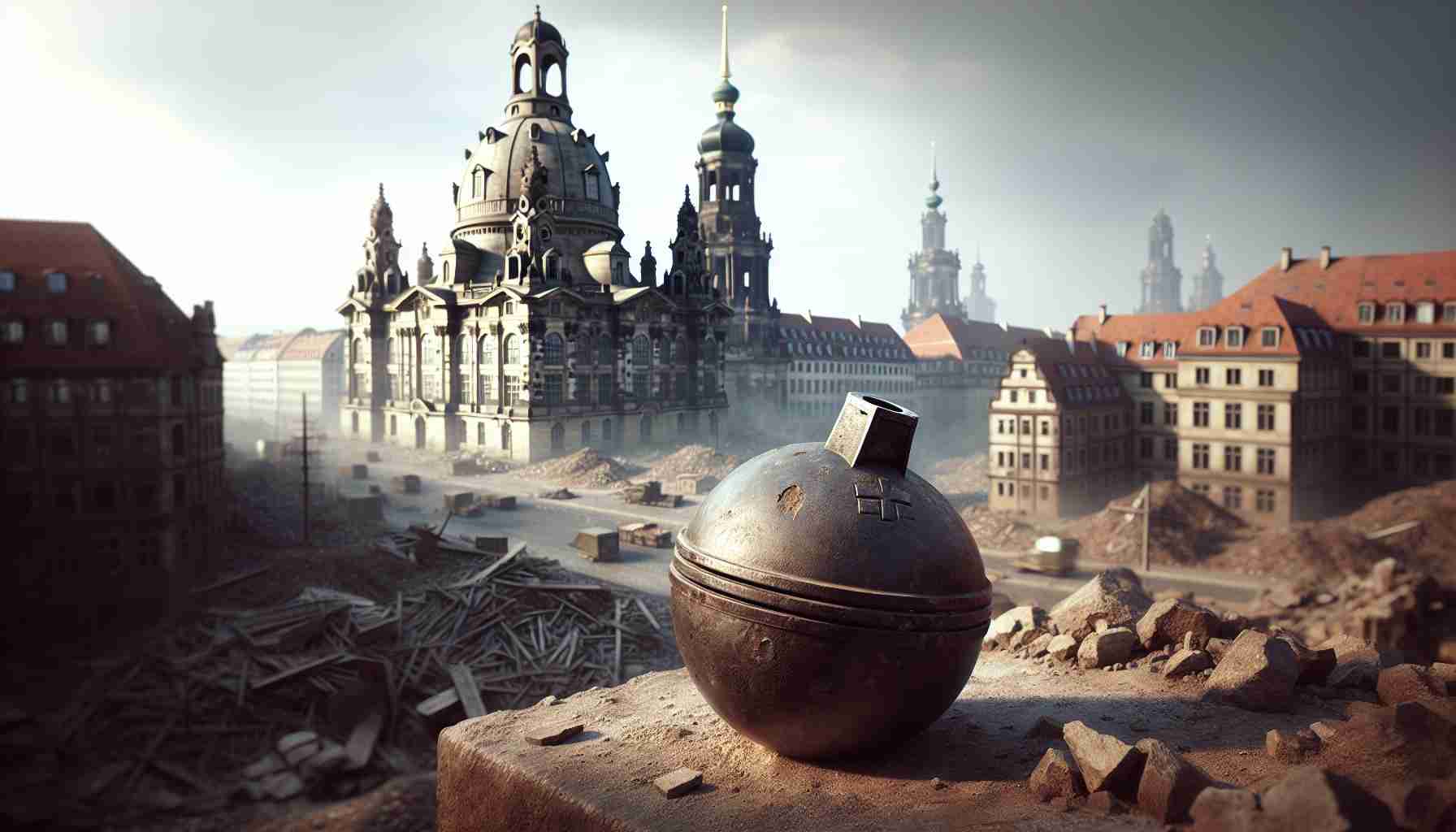History Repeats in Dresden
During demolition work on the Carolabrücke in Dresden, construction crews stumbled upon a live bomb from World War II, specifically of British origin. According to local police reports, this unexploded ordnance is situated along the construction route adjacent to the Elbe River.
This section, known as the Baustraße, has been designated for the transportation of debris from the ongoing demolition. In response to this significant discovery, explosive ordnance disposal experts were promptly dispatched to the site to assess and manage the situation safely.
In light of the potential danger, the police have established a dedicated task force focused on determining the most appropriate course of action. As a result of the ongoing efforts, traffic disruptions are expected in and around the Rathenauplatz and Terrassenufer areas. Several roads are currently closed to ensure public safety and facilitate the work of the bomb disposal team.
Authorities are urging residents and commuters to remain vigilant and plan alternative routes as they navigate through the affected districts. This incident serves as a stark reminder of the lingering impacts of historical conflicts and the importance of careful excavation work in urban areas.
Dresden’s Unexpected WWII Discovery: What You Need to Know
Unexploded WWII Bomb Found in Dresden: The Latest Updates
Dresden is navigating a complex situation after the recent discovery of a live World War II bomb during construction work on the Carolabrücke. This situation highlights the ongoing risks associated with unexploded ordnance in urban areas, a legacy of past conflicts that continues to affect the present day.
The Discovery and Response
The bomb, believed to be of British origin, was found along the Baustraße, which is currently designated for transporting debris from the demolition work. Upon the bomb’s discovery, local authorities acted quickly, deploying explosive ordnance disposal (EOD) experts to safely assess and neutralize the situation.
Impact on Traffic and Public Safety
Due to the complexity and potential danger of disarming a live bomb, the local police have formed a specialized task force. This team is dedicated to determining the safest and most effective method for bomb disposal. As a precaution, several roads in the Rathenauplatz and Terrassenufer areas have been closed, leading to significant traffic disruptions. Local officials are advising residents and commuters to remain aware of the evolving situation and plan alternative routes.
Historical Significance and Modern Implications
This discovery is a poignant reminder of the remnants of history that can surface unexpectedly. UNESCO-recognized Dresden, known for its rich cultural heritage, is not the only city where such incidents occur.
According to recent statistics, more than 2,000 unexploded bombs from World War II are believed to remain in Germany. Cities like Hamburg, Berlin, and Frankfurt have also reported similar discoveries, underscoring the ongoing risks posed by remnants of war, especially during construction or excavation activities.
FAQ: What Should You Know About Unexploded Ordnance?
Q: What should I do if I find a suspicious object?
A: If you encounter an unfamiliar object that looks like a bomb or explosive, do not approach it. Instead, call emergency services immediately.
Q: How common are discoveries of unexploded bombs in Germany?
A: While not everyday occurrences, discoveries of unexploded ordnance, particularly from WWII, happen several times a year across various German cities.
Q: What safety measures are in place during such operations?
A: Authorities typically establish exclusion zones, coordinate with local traffic authorities to manage road closures, and utilize trained EOD specialists to handle unexploded devices safely.
The Broader Perspective: The Need for Vigilance
This incident emphasizes the necessity for ongoing vigilance and careful excavation practices in urban construction. It serves as an insight into how historical conflicts can have lasting implications, influencing modern urban planning and safety protocols.
Conclusion
Dresden’s latest historical reminder serves not only as a wake-up call to residents about their environment but also highlights the importance of preparedness and response strategies when confronting remnants of history. As the city continues to evolve and grow, awareness of its past is essential for ensuring public safety.
For more insights on historical discoveries and urban safety, visit Deutsche Welle.
